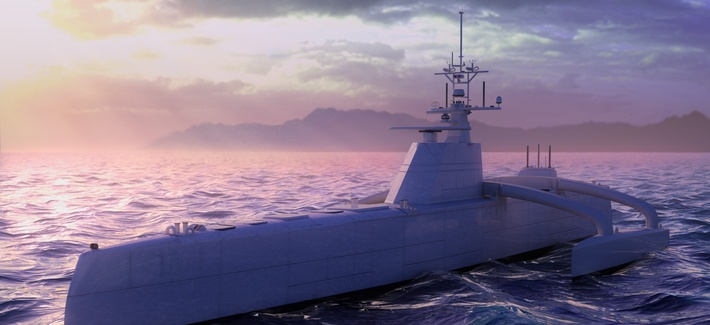F-22Raptor
ELITE MEMBER

- Joined
- Jun 19, 2014
- Messages
- 16,980
- Reaction score
- 3
- Country
- Location

The Pentagon’s Advanced Research Projects Agency (DARPA), an agency responsible for developing and testing cutting-edge military technologies, will test-launch the prototype of its 140-ton Anti-Submarine Warfare Continuous Trail Unmanned Vessel (ACTUV), named Sea Hunter, in April this year, the deputy director of DARPA, Steve Walker, said, according to National Defense Magazine.
The 132-feet (40 meters) long Sea Hunter, an unmanned autonomous trimaran, will be christened in April 2016 at the Vigor Shipyards in Oregon and immediately afterwards commence sea-trials for 18 months to test its long-range tracking capabilities, among a host of other things. During the testing DARPA will closely cooperate with the Office of Naval Research and the Space and Naval Systems Warfare Command.
The ship’s primary mission will be tracking enemy subs in shallow waters, I noted in June 2015 (See: “US Navy to Deploy Robot Ships to Track Chinese and Russian Subs”). Furthermore, I explained that the ACTUV “is designed to operate autonomously for 60 to 90 days straight, surveil large stretches of ocean territory and — should an enemy sub be spotted — guide other U.S. naval assets to the vessel’s location to destroy it (the ACTUV itself is unarmed).”
“Imagine an unmanned surface vessel following all the laws of the sea on its own and operating with manned surface and unmanned underwater vehicles,” Walker told reporters during a briefing at DARPA headquarters in Arlington, Virginia on February 10. “We think the real cost savings will be in operating this vessel at sea compared to how we operate vessels today.”
The ACTUV will only cost about $15,000 to $20,000 per day to operate, according to Scott Littlefield, program manager of DARPA’s Tactical Technology Office, quoted in Sea Magazine. (In comparison, a destroyers costs around $700,000 to operate per day.) DARPA’s website notes that the ACTUV’s “objective is to generate a vessel design that exceeds state-of-the art platform performance to provide propulsive overmatch against diesel electric submarines at a fraction of their size and cost.”
Sea Magazine paraphrases Littlefield in pointing out other advantages of the ACTUV including “greater payload and endurance than a ship-launched unmanned surface vehicle, the ability to launch from and recover at a pier, and the elimination of the need to integrate the system with a ship.”
One of the trickier technological aspects in the development of the ACTUV will be the selection of a capable primary search-and-detection sonar. I reported in November 2015 that the Raytheon’s first fifth-generation medium-frequency hull-mounted sonar system has been installed on the Sea Hunter for testing. It goes without saying that properly identifying the ACTUV targets will be critical. Also,“autonomous compliance with maritime laws requires the correct identification of surface ships and other objects while at sea,” I explained.
The ACTUV is part of the Pentagon’s so-called Third Offset strategy devised to help maintain U.S. military superiority over peer competitors such as China and Russia. “We need to continue to think how to build highly capable military systems, especially to prepare for fights with highly capable adversaries,” said Walker.(He did not mention the third offset strategy by name.)
The third offset strategy will not just rely on new military technologies but also focus on merging new with legacy technology, as well as new with old warfighting methods. “We need to mix it up,” said Walker. “We need to build war-fighting architectures that are more heterogeneous in nature, hard to target and rely on smaller and cheaper microelectronics technologies.”
The Pentagon seeks $2.973 billion in funds for DARPA in its fiscal year 2017 budget request, the same amount requested for fiscal year 2016.
World’s Largest Anti-Submarine Robot Ship Ready for Sea-Trials in April | The Diplomat


